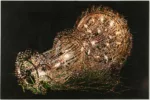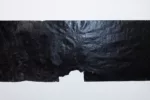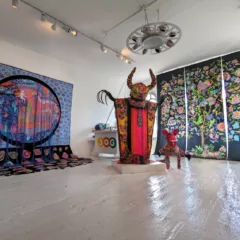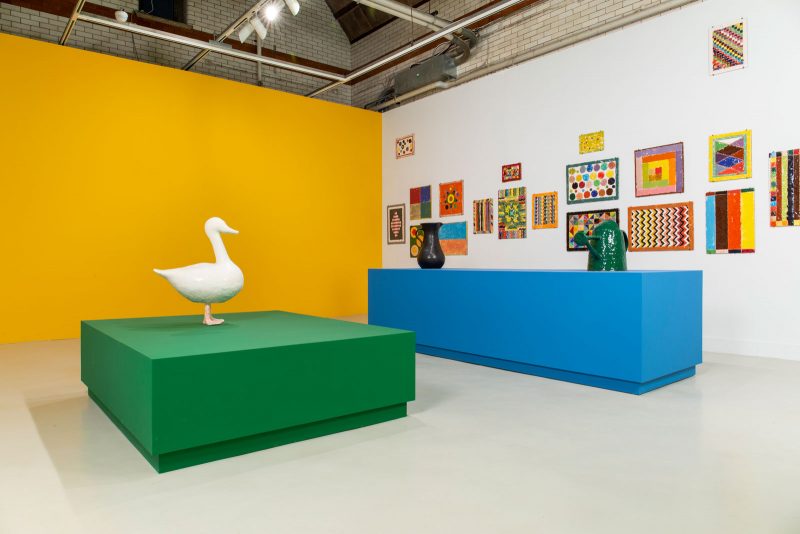
Polly Apfelbaum (b. 1955) grew up with four paintings in her childhood home by David Ellinger (1913-2003), a self-taught Pennsylvania painter, antiques dealer, and drag performer. Ellinger’s palette formed part of Apfelbaum’s early visual experience, which itself was embedded in a regional language of Pennsylvania German design. Ellinger’s paintings depict scenes and objects from rural life, often Mennonite and Amish communities, through saturated, colorful abstraction and experimentation with pattern. Both artists share an appetite for material—velvet, ceramic, quilted—and for the activity of making as a prolific, ongoing exercise. The concurrent exhibitions at Arcadia University, Polly Apfelbaum: For the Love of Una Hale and Out of the Heart: The Life and Work of David Ellinger, invite a space of dialogue around intergenerational, artistic exchange. Such as how the complex life and work of one artist might make space for generative exploration for another, how abstraction functions in the hand-made, how working cross genre, cross medium, might extend to a life practice of expression. Reading and writing these two shows together, Apfelbaum and Ellinger, necessitates a both/and approach.
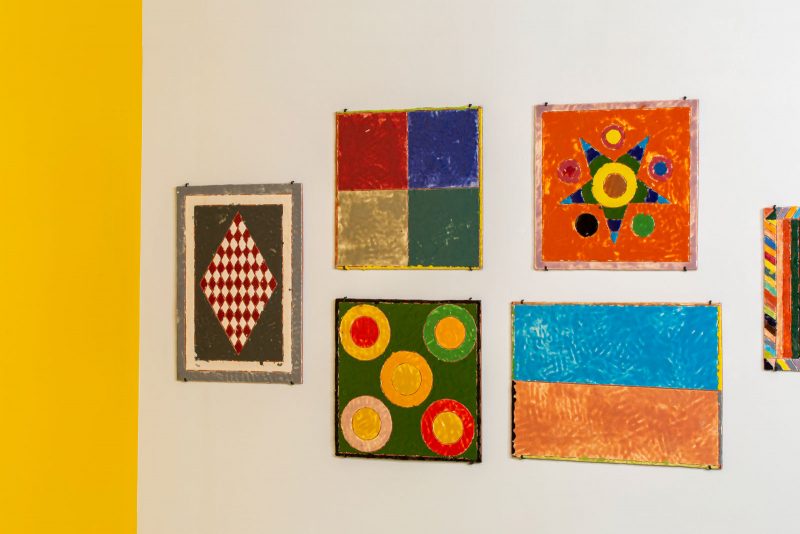
In her 20 month residency in Arcadia’s ceramic department, Apfelbaum made hundreds of terracotta wall works and sculptures using Mason stains, which allow for decadent painted glazes in rich colorways. For the Love of Una Hale shows 60 of these works, along with 3 oversized sculptures of familiar Pennsylvania German symbols– a goose, a watering can, and a pitcher– and two wallpapers, also influenced by Ellinger. The exhibition title references the stage name Ellinger used as a ‘female impersonator’ touring the Pennsylvania club circuit. The large ceramic tiles are hung salon style, their graphic shapes referencing quilting, game boards, color-field painting, and barns that nod to Ellinger’s tobacco barn paintings. Their surfaces are thick, gelatinous, colorful pools of shine-slick glaze, often melding together and flowing out and around sgraffito lines. Turquoise, raspberry, deep maroon, slivers of orange, blush, forest green, cores of gray, the colors are so yummy and unabashed.
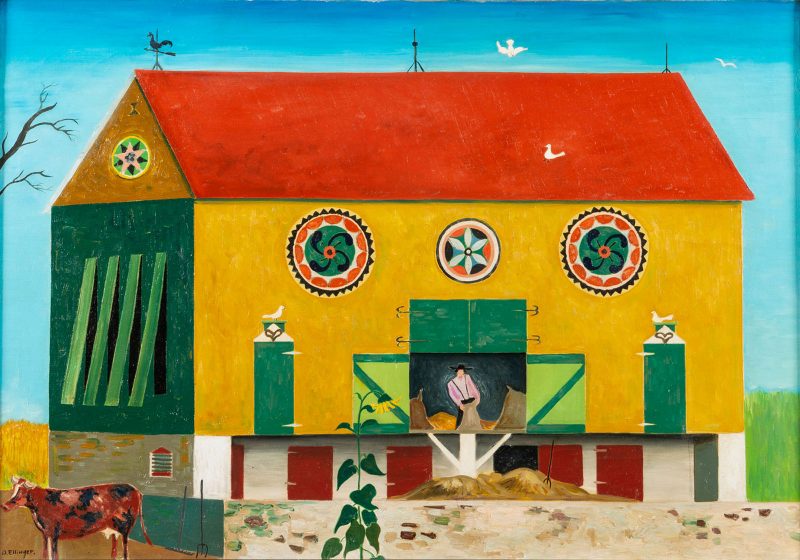
Photo: Michael E. Myers, Steadfast Imaging. Courtesy Gratz Gallery & Conservation Studio, Doylestown, PA.
There’s an open channel in these works between ceramics and painting, in keeping with Apfelbaum’s decades of working across boundaries of painting, installation, printmaking, and textiles. Often her hybridities sidle up to the big ‘-isms’ (i.e. modernism, formalism, minimalism) with more expansive interpretations of their terms via the handmade, the intimate, or transformative. She’s well known for her ‘fallen-paintings,’ hand-dyed synthetic velvet floor works that absorb and reflect light in what Apfelbaum calls a kind of ‘cheap-magic.’ Ellinger used velvet, too, as the ground for his theorem paintings—a process that uses stencils and oil paint to render still lives, popular in the 1800s. Apfelbaum’s residency at Arcadia, a few miles from where she grew up, brought her artistic biography into new relief with her life-long practice. I see Apfelbaum’s inclusion of Ellinger in this process as a generous acknowledgement of the rich and strange sharing that artistic influence entails, an embrace of the interdependence of early-learning and retrospective witness.
Out of the Heart: The Life and Work of David Ellinger features a well-rounded selection of the artist’s paintings of barns, landscapes, domestic interiors, and gardens. Archival materials are interspersed throughout the show, such as Ellinger’s studies of historic artifacts from his time with the Works Progress Administration, furniture he painted, and photographs and texts from his performance career. These materials start to give flesh to a life punctuated by significant loss and creative resilience. Ellinger was effectively an orphan after his mother died when he was five and he left his father to begin working on a farm in his early teens. He grew up in the Great Depression and achieved modicums of success through his job at the WPA, lifelong antique dealing to significant collectors, and through the sale of his paintings.
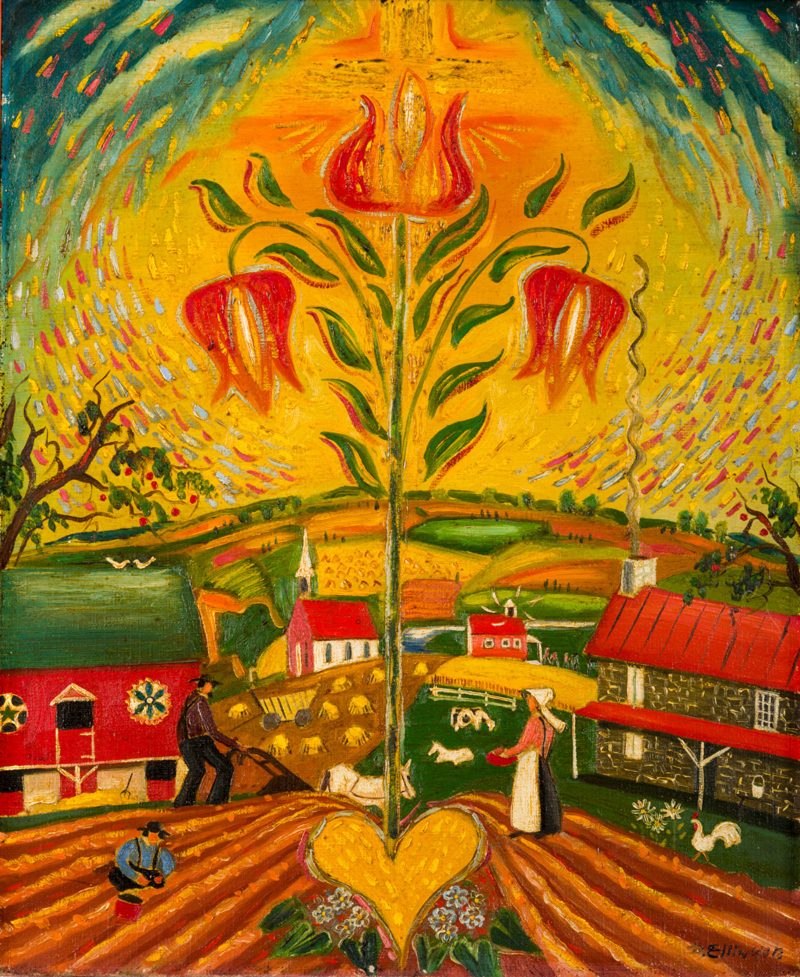
The painting for which the show is named references a quote Ellinger penciled on the back of a small painting of a field. It comes from the biblical passage, Proverbs 4:23: “Guard your heart with all diligence, for out of the heart flows the issues of life.” In the center of the field, a yellow heart is the seed for a giant flowering plant that branches into the sky, surrounded by bits of green, yellow, orange, and at the furthest reaches blue. The tulips look down on a world bifurcated at its center: on the left, two men are working the field in front of the barn, on the right a woman sows seeds near the house. The division of labor and gendered tasks appears often in the world Ellinger observes—in religious services, around the dinner table, in the home.
A gender-nonconforming performer painting images of strict social/sexual dynamics is not as contradictory as it may seem on its surface. Ellinger was an outsider to the communities he painted, although he lived near them. What we’re seeing are his external representations of semi-cloistered lives. The codes by which those lives are legible to outsiders are deliberate and chosen, such as plain clothing and head coverings. In a way, drag performance or in Ellinger’s context, ‘impersonation’ uses the codes of gendered roles but for altogether different means of play, expression, or parody. He was famous for performing a fire dance using multi-colored flames and elaborate head-dresses.
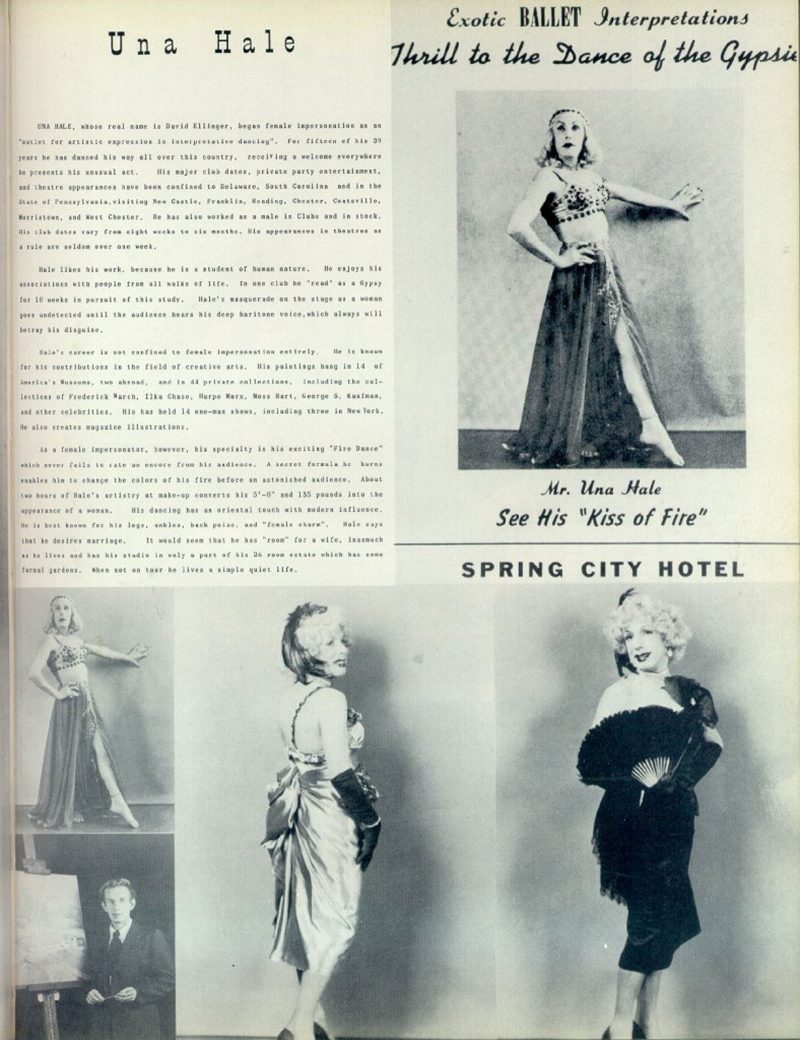
A similar structure holds in Apfelbaum’s work as well, where she approaches the rigidities of art history without disavowing them, rather taking its self-proclamations, and reconstituting them to allow for myriad aesthetic and personal subversions. More research is needed into the local history of drag in the mid-20th century. “Femme Mimics,” (1954) a likely self-published text compiled by E. Carlton Winford profiles Ellinger alongside performers making art from positions of relative vulnerability and illegality in their day. It’s crucial to understand Ellinger as both outsider and agent, anything less reduces the largeness of his complexity.
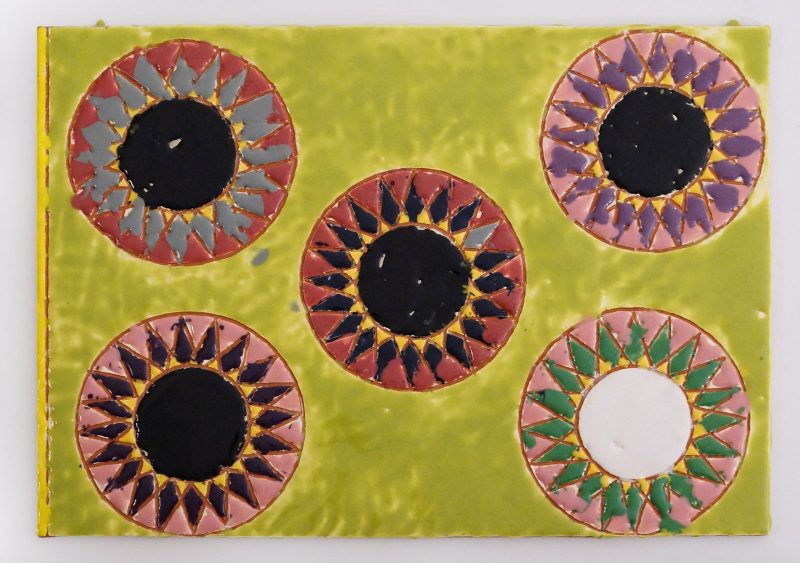
In many of Ellinger’s paintings, the skies are variations of chromatic greens, often eerie and suggestive of approaching storms. I like to imagine that he saw a green flash over farmland once at sunset, and that it presented him with a possibility that he hadn’t quite known before. For me, the green sky becomes a container for holding the unknown, the surprise, the variegated depths of his life and work. It’s a space in which the accumulation of antiques, of Apfelbaum’s colorways, of glaze and velvet, shapes, Una and her dance of fire, live. To keep walking into the space of that green sky, is the distinct offering of Out of the Heart and For the Love of Una Hale.
“Polly Apfelbaum: For the Love of Una Hale” and “Out of the Heart: The Life and Work of David Ellinger” are on view through April 17, 2022 at Arcadia Exhibitions. Major support for the project has been provided by The Pew Center for Arts & Heritage with additional support from Creative Capital.



